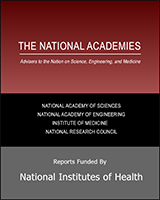From: 3, Longitudinal Aging Study in India: Vision, Design, Implementation, and Preliminary Findings

NCBI Bookshelf. A service of the National Library of Medicine, National Institutes of Health.
| Punjab | Rajasthan | Kerala | Karnataka | All States | |
|---|---|---|---|---|---|
| Household | |||||
| N | 222 | 230 | 261 | 237 | 950 |
| Basic utilities | |||||
| No electricity in home | 3.5 | 42.6 | 1.5 | 2.8 | 15.0 |
| No running water in home | 40.7 | 86.3 | 94.8 | 74.3 | 78.6 |
| No access to improved water source | 2.2 | 68.9 | 79.8 | 10.7 | 44.5 |
| No private toilet facility | 10.1 | 67.8 | 0.3 | 42.0 | 35.8 |
| No access to improved sewerage disposal | 48.7 | 88.1 | 5.7 | 75.2 | 59.0 |
| Does not use good quality cooking fuel | 31.0 | 88.0 | 52.4 | 43.5 | 57.9 |
| No refrigerator in home | 33.7 | 93.2 | 48.0 | 87.1 | 72.6 |
| Individual | |||||
| N | 365 | 358 | 413 | 315 | 1,451 |
| Living alone | 10.8 | 6.4 | 17.3 | 16.7 | 12.8 |
| Illiterate | 61.4 | 79.7 | 11.1 | 46.5 | 50.3 |
| Health insurance* | 0.5 | 0.8 | 12.2 | 6.8 | 5.7 |
| Difficulty with at least 1 ADL | 9.5 | 7.0 | 20.1 | 14.1 | 12.7 |
| Undiagnosed hypertension | 39.5 | 40.9 | 19.4 | 27.6 | 31.3 |
| Urban | 37.1 | 39.1 | 19.3 | 36.4 | 33.4 |
| Rural | 40.2 | 41.1 | 19.8 | 22.6 | 30.6 |
| Men | 46.0 | 38.5 | 19.7 | 26.1 | 31.5 |
| Women | 32.7 | 43.0 | 19.6 | 28.8 | 31.2 |
| Under age 60 | 39.4 | 39.6 | 20.0 | 20.4 | 28.6 |
| Age 60 and older | 39.2 | 42.1 | 19.3 | 42.1 | 35.2 |
| Food insecurity (past 12 months) | 4.2 | 3.9 | 1.4 | 2.4 | 2.9 |
| Underweight (BMI < 18.5) | 12.2 | 41.1 | 13.4 | 28.3 | 26.7 |
Of the respondents aged 45 and older who said they did not have health insurance, 46% said they did not have it because they did not know what it is (have never heard of it); 23% said they could not afford it; 16% did not feel that they needed it; 7% did not know where to purchase it; 3% reported being denied health insurance and 5% listed some other reason for not obtaining health insurance.
NOTES: All numbers are percentages. The sample is restricted to respondents who reported they were at least 45 years old in the individual interview and provided a nonmissing answer for each of the variables listed in the table, with the exception of hypertension variables. Hypertension prevalence was calculated only among respondents in the biomarker module. Improved water source includes piped water, tube well, and protected dug well. Sources of water not considered improved are unprotected wells, water from springs/rainwater/surface water, and tanker trucks. Access to improved sewage disposal includes piped sewer system or septic tanks. Dry toilets, pit latrines, or no facility are not included. Good quality cooking fuel includes coal, charcoal, natural gas, petroleum, kerosene, or electric. Activities of daily life (ADL) include using a toilet, bathing, dressing, eating, walking across a room, and getting out of bed. Undiagnosed hypertension is among all respondents, whether hypertensive or not. It is a binary indicator if hypertension is indicated from the biomarker module but the respondent reports never having received a diagnosis for high blood pressure or hypertension from a health professional. Lee et al. (2012) includes an in-depth analysis of undiagnosed hypertension. Living alone is defined as living with one’s self only or with one’s spouse only (Dandekar, 1996). The surprisingly high figures for Kerala for lack of access to improved water sources and for not having running water in the home are consistent with other relevant reports about Kerala, e.g., International Institute for Population Sciences and Macro International (2007). Food insecurity is a binary indicator for respondents who report having lost weight due to hunger, not eaten for a whole day or gone hungry because there was not enough money to buy food, or otherwise reduced the size or frequency of meals because there was not enough money to buy food. Means are weighted using the state-specific or the pooled-state weights.
SOURCE: Data from Longitudinal Aging Study in India (LASI) Pilot Wave.
From: 3, Longitudinal Aging Study in India: Vision, Design, Implementation, and Preliminary Findings

NCBI Bookshelf. A service of the National Library of Medicine, National Institutes of Health.